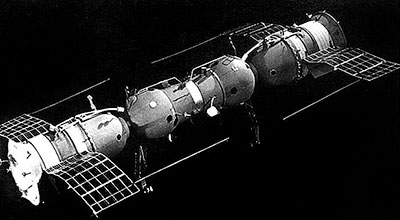50 Years Ago: The First Automatic Docking in SpaceOn Oct. 30, 1967, the Soviet Union accomplished the first automatic docking in space.

Mastering docking was an essential step in the development of both their lunar landing effort and their space station plans. The two spacecraft, Kosmos 186 and 188, were unmanned variants of the Soyuz manned vehicle, still being recertified to carry crew members after the Soyuz 1 accident in April 1967 that claimed the life of Cosmonaut Vladimir Komarov. A successful docking demonstration was a critical step in their return to flight effort.
Kosmos 186 launched first on October 27 and underwent a meticulous on-orbit checkout, followed by Kosmos 188 three days later. With Kosmos 186 taking the active role in the docking, the two craft docked just 62 minutes after the launch of Kosmos 188, the passive target spacecraft.
The two craft remained mechanically docked for three and a half hours, although an electrical connection could not be made. The Kosmos 186 Descent Module was successfully recovered in the Soviet Union on October 31, but the accidental firing of Kosmos 188's self-destruct mechanism during the descent prevented its recovery on November 2.
Despite the anomalies, the automatic docking mission demonstrated a new capability for the Soviet Union that proved valuable to their future human space flight programs. Although the Soviet lunar landing program was cancelled before an actual landing mission, automatic dockings were an integral component of their Salyut and Mir space station programs and remain in practice today on the Russian segment of the International Space Station.












